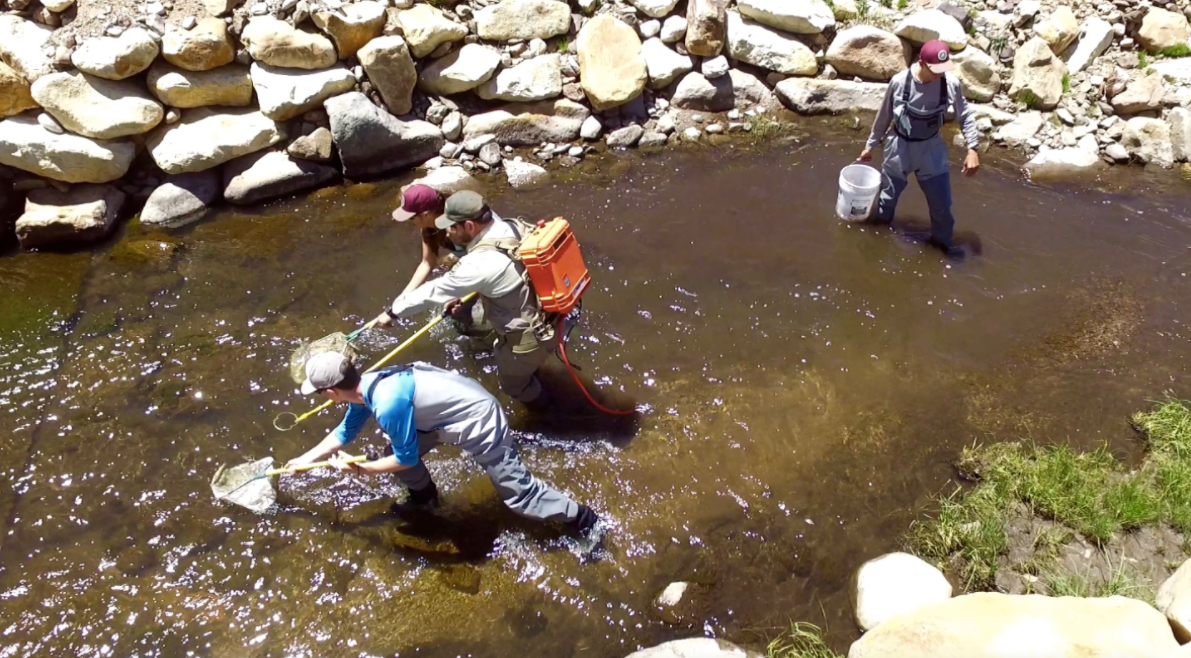Located in Northern New Mexico’s Sangre de Cristo Mountains in the Upper Rio Grande River Basin, Valle Vidal lies within the Carson National Forest. Meandering its way through Valle Vidal, Comanche Creek is one of the last refuges for Rio Grande cutthroat trout in the state of New Mexico.
TU’s extensive Commanche Creek project addresses the environmental issues that have stemmed from heavy land use activities prior to the U.S. Forest Service acquiring the land from Pennzoil in 1982. Large-scale mining, logging and grazing operations left the watersheds within the Valley Vidal unit in less than ideal condition for native Rio Grande cutthroats.
Currently, Valle Vidal is managed by the Forest Service for multiple use and sustained yield via the Multiple Use-Sustained Yield Act of 1960. This means the Forest Service is required to manage this public land for the sustainable production of timber, grazing, oil and gas drilling, water, recreation, and wildlife. A recreational catch-and-release fishery for Rio Grande cutthroat trout is one of the uses that draws in visitors from across the country.
Forest Service Fisheries Biologist Michael Gatlin and Trout Unlimited staffer Toner Mitchell took the Native Odyssey crew to multiple sites around the project area to see the issues they are facing and the techniques they are using to achieve their restoration goals. We started our tour by looking at the terminal fish barrier that was recently completed. Similar to other fish barriers we have seen during our first three weeks, this large concrete structure prevents the upstream movement of brown, brook and rainbow trout into Rio Grande cutthroat territory.
Throughout the day, Michael and Toner informed us on the importance of treating erosional headcuts, increasing baseflow, and restoring degraded wetlands. Never had I considered how essential wetlands are to native trout in the West. Coming from East Tennessee, wetland restoration is not something that usually comes up in conversation when talking about stream restoration for native trout.
The high elevation wet meadows and slope wetlands are essential in maintaining stream base-flow and providing cold water for Rio Grande cutthroat throughout the year. The historical land use created issues with soil erosion, increase in sediment load in the stream, increase in stream water temperature, and overall degradation of riparian and wetland areas. Despite the considerable damage that has occurred in Valle Vidal, current restoration efforts are having a positive impact in the watershed.
Wooden post vanes placed throughout Comanche Creek have been utilized to reduce the effect of stream channelization and allow the banks to stabilize with vegetation. Due to the large herd of elk in the area, as well as the grazing cattle in the summer months, exclusion fences are often used to maintain proper vegetation of streamside areas.
At our last pit stop of the day, Michael broke out the backpack shocker for us to try and sample some Rio Grande cutthroat trout. Michael explained the importance of backpack electroshocking sampling to keep tabs on the populations of Rio Grande cutthroat in Valle Vidal. He also explained how backpack electroshocking is generally harmless to the trout. This proven technique sends pulses of electricity into the water to temporarily contract the fish’s muscles until a crew member can scoop them up with a net. After a short safety briefing, we quickly geared up with our new Simms waders and finally got our boots wet. With Michael manning the backpack shocker, we slowly worked through a nice pool where we had seen cutthroat earlier in the day. It didn’t take long for us to turn up about two dozen beautiful Rio Grande cutthroat. We quickly netted the temporarily stunned trout and placed them in a bucket of cold water for a closer look. After some quick pictures, we safely released the trout we collected and watched them swim strongly back to their pool.
The success of this project could not be achieved without great partnerships from the Quivira Coalition, Comanche Creek Working Group, Trout Unlimited, Coca Cola, and the Carson National Forest among others. Valle Vidal is a prime example of the benefits a healthy watershed can provide to all its users and the good things that can come when groups with different backgrounds and similar agendas work together. This project also showcases the importance public lands play in the overall role of protecting sensitive species like the Rio Grande cutthroat trout.
— Brett Winchel



